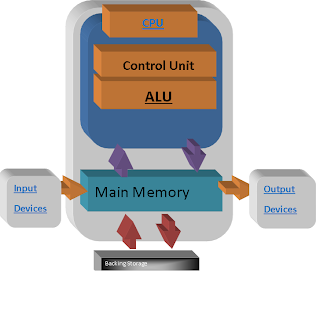System software is computer software that is made to operate the computer hardware, (such as the RAM, the CPU, etc.) and to provide a suitable set of conditions for the running of application software.
It is often considered as the "Core" programming of the computer.
Application's Software
This is software that is designed to help users perform tasks.
It can vary from text editors to graphic image manipulation programs such as OpenOffice and the GIMP.
There are many different type of software applications, such as office applications like Word and Excel, and there is communication software such as web browsers and email that allow you to access websites and send messages to people accross the world.
Software Utilities
Utility software is software that is designed to help analyze, configure, optimize and maintain the computer.
It can range from anti-virus software to disk defragmentors to screensavers.
Antivirus is used to detect, remove and delete viruses, malware, trojan horses and many other types of infective files and viruses.
There are several ways for antivirus to detect viruses.
While I will not explain them in detail I will list them and give brief descriptions of the several methods.
"Signature based detection" is the most commonly used and most effective method of detecting threats as it can detect the same threat each time it is found.
The only loophole involved with this form of antivirus is that newly made viruses wont have their signatures being detected.
"Heuristic-based detection" is a form of detection where it finds pieces of code that execute infective and dangerous actions.
"File emulation" is another form of virus detection where the software is executed in a "virtual environment" and its actions are then recorded to see if it is malicious.
Firewall
A firewall is a program that either allows the access of certain transmissions within a certain set of rules and regulations. This is one of the most important security features a computer can have.
Firewalls cannot prevent E-Mail viruses so it cannot protect you from that type of scam.
Even if you have an antivirus program, you should not open them if you are not sure of their source.
Firewalls also cannot detect phishing scams, so it is advised that you do not open links that you do not know or trust fully.
There are several ways for antivirus to detect viruses.
While I will not explain them in detail I will list them and give brief descriptions of the several methods.
"Signature based detection" is the most commonly used and most effective method of detecting threats as it can detect the same threat each time it is found.
The only loophole involved with this form of antivirus is that newly made viruses wont have their signatures being detected.
"Heuristic-based detection" is a form of detection where it finds pieces of code that execute infective and dangerous actions.
"File emulation" is another form of virus detection where the software is executed in a "virtual environment" and its actions are then recorded to see if it is malicious.
Firewall
A firewall is a program that either allows the access of certain transmissions within a certain set of rules and regulations. This is one of the most important security features a computer can have.
Firewalls cannot prevent E-Mail viruses so it cannot protect you from that type of scam.
Even if you have an antivirus program, you should not open them if you are not sure of their source.
Firewalls also cannot detect phishing scams, so it is advised that you do not open links that you do not know or trust fully.



































